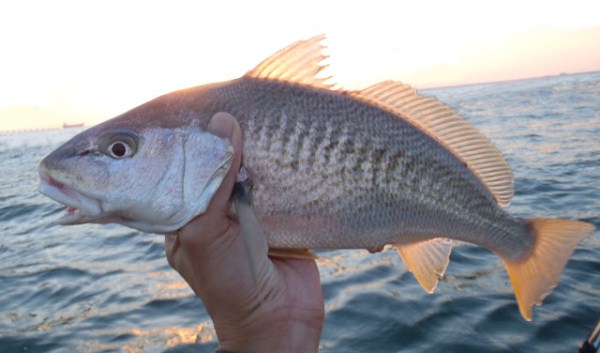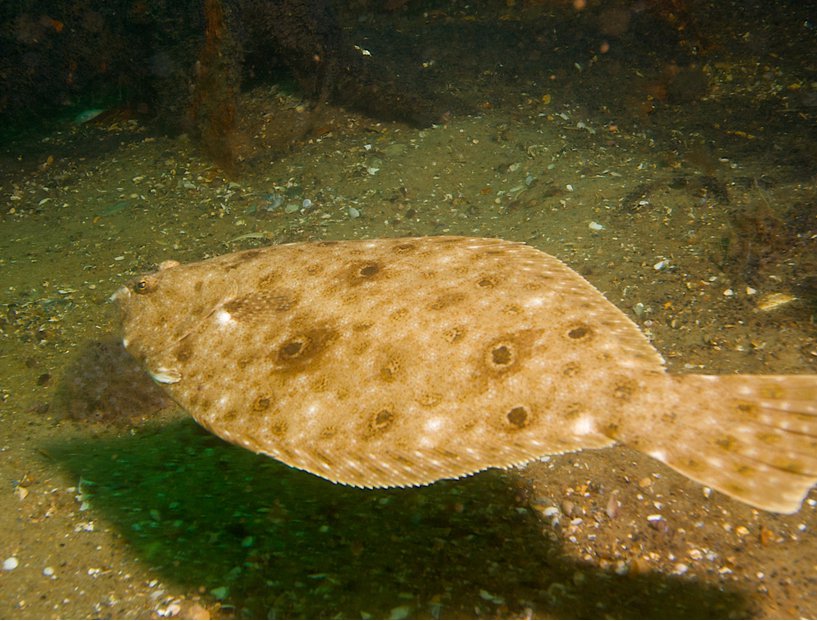Creativity, dedication, legal challenge bring shoreline to life

Something new to the blog: This piece, ©Bay Journal News Service, is reprinted and modified here with permission. Written by me and first published 10/13/15, it’s been revised for blogging by adding copyrighted images provided by Underwood & Associates. See it picked up here, for one.
By Dick Williams
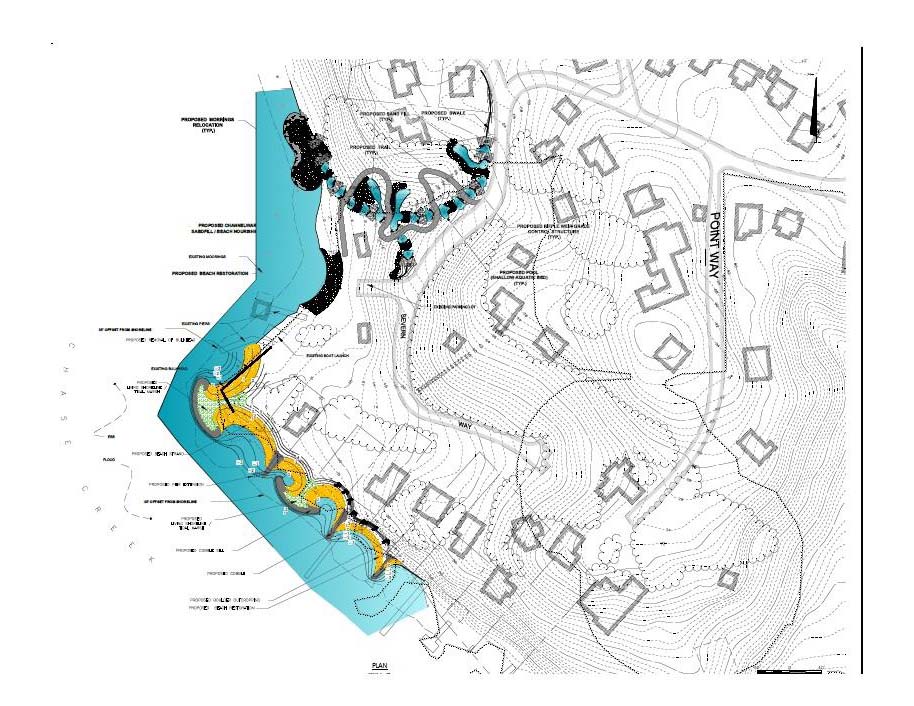 Pines on the Severn, a small community on Chase Creek, off the Severn River just above Annapolis, recently completed a living shoreline, a project that can show us all how much perseverance it sometimes takes to do the right thing for the environment, and why it’s worth it.
Pines on the Severn, a small community on Chase Creek, off the Severn River just above Annapolis, recently completed a living shoreline, a project that can show us all how much perseverance it sometimes takes to do the right thing for the environment, and why it’s worth it.
The National Oceanic and Atmospheric Administration defines a living shoreline as “a natural bank stabilization technique that uses plants, sand, and limited use of rock to provide shoreline protection and maintain valuable habitat.” Living shoreline projects are “those that use a variety of structural and organic materials, such as wetland plants, submerged aquatic vegetation, oyster reefs, coir fiber logs, sand fill and stone.”
In 2013, the project ran into trouble. Pines on the Severn wanted to replace a 400-foot, 30-year-old decaying bulkhead and shoreline with a living shoreline. The Maryland Department of the Environment (MDE) denied a permit under the state’s 2008 Living Shoreline Protection Act. To save the project, Severn Riverkeeper Fred Kelly filed an appeal in Circuit Court against the MDE.
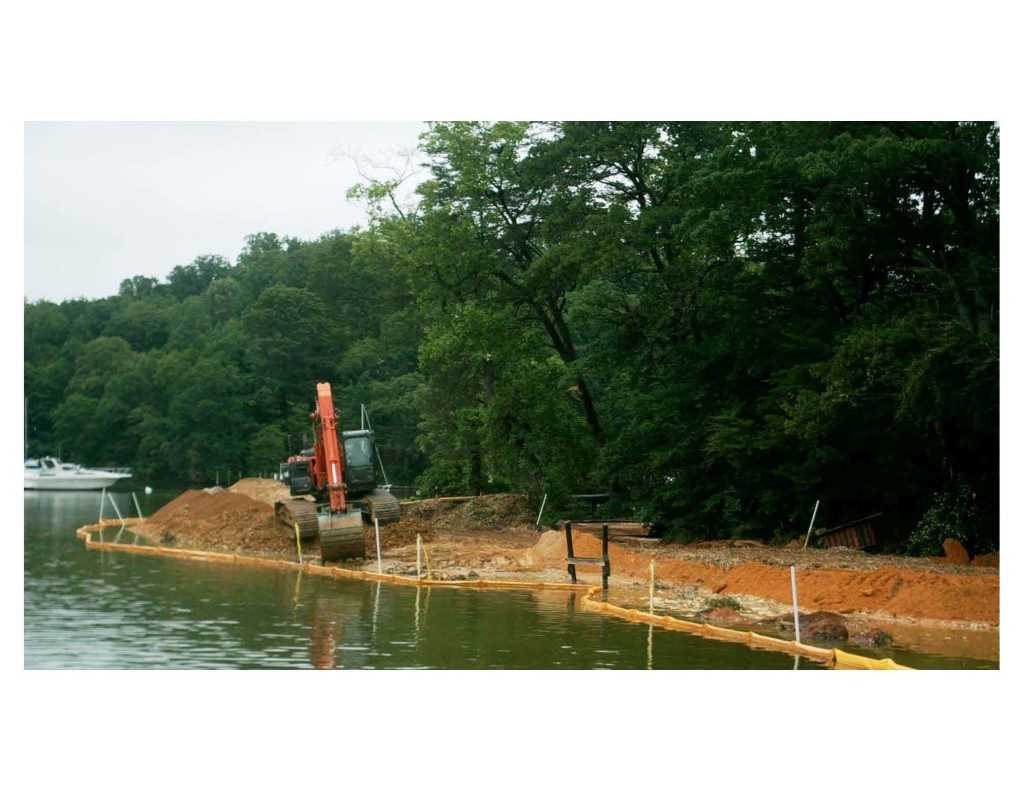 The legal action challenged the MDE’s claim that the application’s approval “window” had expired. Wrangling over several years, according to Chesapeake Legal Alliance, the pro-bono law group that handled the case, was “due to rigid application of criteria that did not account for site specific factors around which the plan was tailored.” Ultimately the community and the MDE came to an agreement, a new permit was approved, and the case closed.
The legal action challenged the MDE’s claim that the application’s approval “window” had expired. Wrangling over several years, according to Chesapeake Legal Alliance, the pro-bono law group that handled the case, was “due to rigid application of criteria that did not account for site specific factors around which the plan was tailored.” Ultimately the community and the MDE came to an agreement, a new permit was approved, and the case closed.
Capital Gazette reporter E.B. Ferguson got a written statement from the MDE: “This particular project has involved a lot of confrontation and process. We can all do better to improve the process and most importantly, the environmental results.”
As Riverkeeper Kelly said recently, it took four years to get the permit and two weeks to construct the project.
To me, it sounds as though some major tweaking of the law is in order if site-specific factors have insufficient scoring in project review.
The living shoreline designer and contractor for the Pines on the Severn project, adjacent to its community beach and finger pier, was Keith Underwood, of Underwood & Associates. His plans remade part of Chase Creek’s shore into small lagoons to slow wave action, both from wind and boats, naturally facilitating the deposit of sand to maintain the shoreline. Calmer wave action also tends to leave beach sand finer rather than coarser. Cobble, other rock and sections of tree trunks were used to stabilize the shoreline and to attract a variety of living organisms.
None of this is possible with bulkheading, which is costly to build and expensive to maintain. Fortunately, most states along the East Coast now 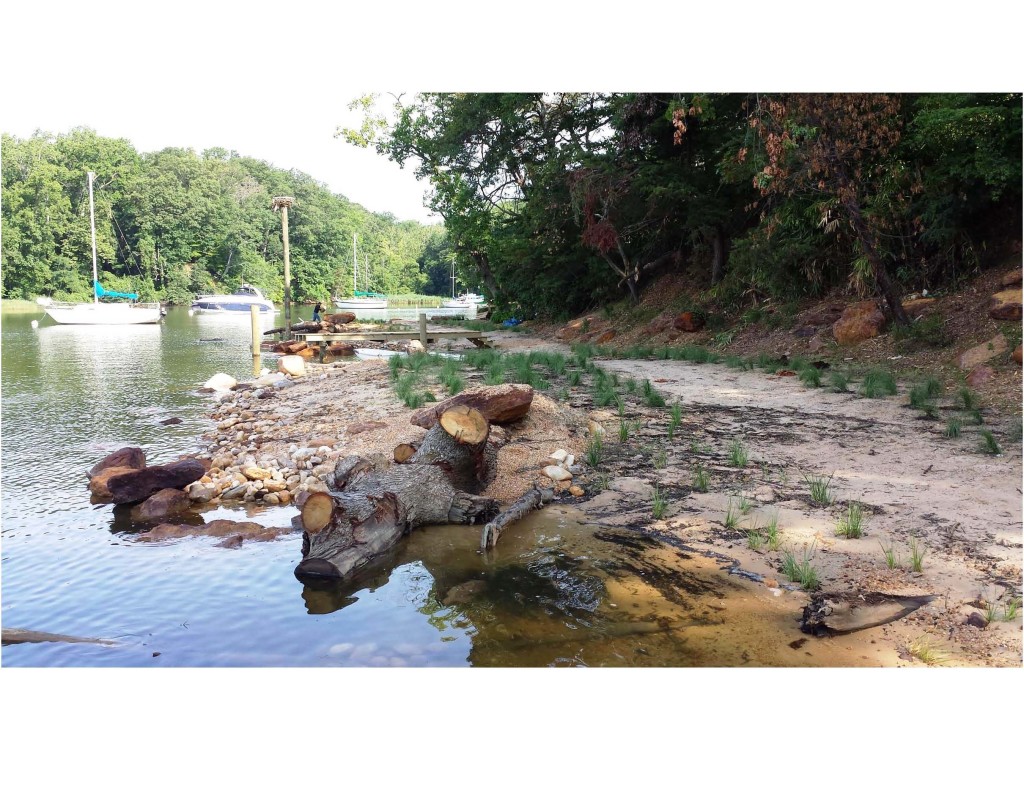 prohibit seawall construction in its various systems, including those surrounding the Bay.
prohibit seawall construction in its various systems, including those surrounding the Bay.
In an on-site interview, Underwood said, “There are two species of ribbed mussel we’re going to look for here. One’s going to set up on the rocks here and the other is going to set up in this spartina marsh itself.” Local Boy Scouts and students from the nearby community college helped plant the spartina grasses.
“It won’t surprise me over time to see oysters colonize on some of the stone here as well,” Underwood said. “We’re going to try to re-establish redhead grass in the face of these lagoons.”
Redhead grass is a hearty “anchoring” bay grass with an extensive root system under a firm mud bottom. At the water’s surface, it shows flat, oval leaves that wrap around the base of straight, slender stems. White perch, for instance, seek such habitat. They do not seek bulkheads. And, with the return of natural sediments in living shorelines comes food for benthic-feeding fish in the Bay such as summer flounder and Atlantic croaker.
After filing for a new permit, the Department of Natural Resources funded the project to the tune of $299,000. The Pines on the Severn 237-home community improvement association kicked in $24,000. The Severn Riverkeeper contributed in-kind services, as did the Chesapeake Legal Alliance.
These efforts of a determined community association, volunteer legal work by the Chesapeake Legal Alliance and a proactive Riverkeeper provide a great example of persistence in the face of halting bureaucracy. Why not regionally develop a list of aging bulkheads throughout the watershed to stimulate and prioritize local remedial action where critical areas of failing shoreline habitat are due in part to these structures?
Dick Williams, LEED AP® BD+C, consults on high-efficiency construction and sustainability issues and writes and blogs regularly to address his curiosity about humankind’s impact on the biosphere. Distributed by Bay Journal News Service.
